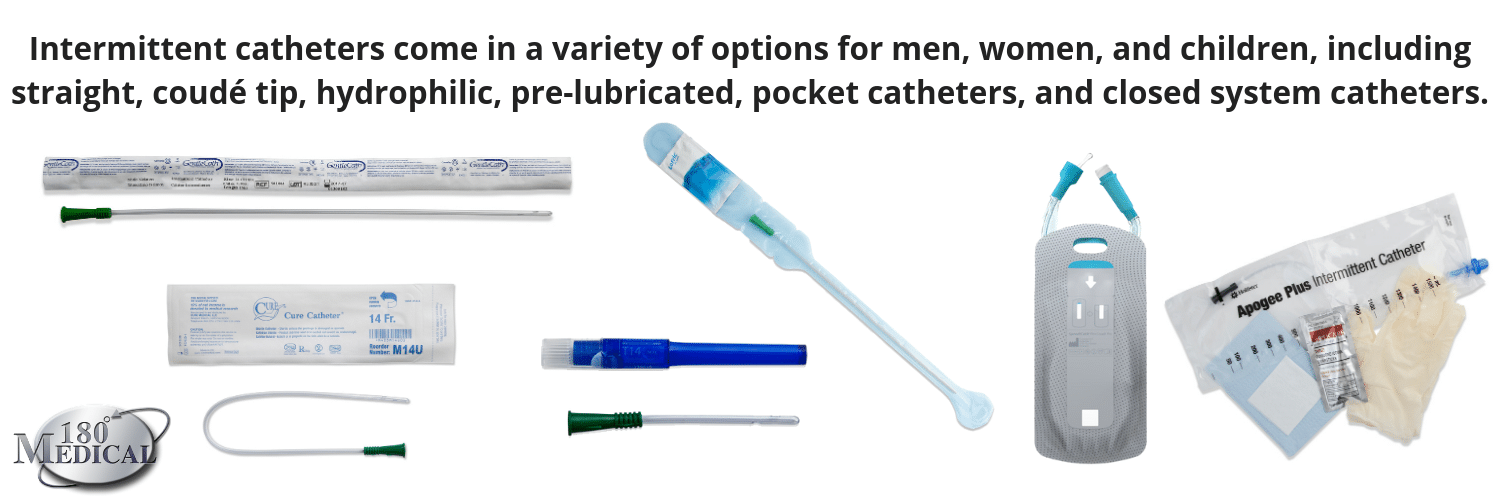Living with my spinal cord injury has taught me many valuable lessons, and I’ve definitely had to learn how to manage my condition to have a more full and independent life. After an SCI, you often have to relearn how to accomplish basic tasks like dressing yourself. One of the most important tasks for me was figuring out a bladder management program that works for me. This included learning to use catheters with an SCI.
Personally, finding the right urological supplies for my needs was a huge step to regaining my independence. Without my catheter supplies, my bladder issues would probably negatively impact my health and overall quality of life. So I’d like to share my tips to help you find a bladder management program that can work for you!
Here are the steps to take in getting the right catheter supplies when living with an SCI.
1. See your doctor.
First, you need to see your prescribing healthcare professional, like a urologist. This is because you can only get catheters with a valid prescription. In addition, your doctor will be the best source for determining your needs based on your condition and anatomy.
Your doctor may perform a few tests to see how well your bladder functions after your SCI. For example, some people live with a neurogenic bladder or bladder retention, meaning their bladder doesn’t work like it used to before their injury and holds onto urine. Others with SCI may only have urinary incontinence. Many people have a combination of these two bladder issues. When it comes to determining your best bladder management options, your individual anatomy and condition is the biggest factor.
In addition, your prescribing doctor will also evaluate the level of your injury and determine whether or not you will be able to self-catheterize. Please note that even If you are a quadriplegic or have limited hand function, you may still be able to use intermittent catheters on your own. You can find out more tips about learning to self-catheterize with limited hand dexterity in a recent blog post by Mason Ellis here.
2. Consider which catheter type may best fit your needs.
Just to reiterate, when it comes to determining the catheter type that will best work for your needs, you should consult with your doctor. However, it’s always good to have plenty of information going in, so you can be fully educated on the possible choices that could work for you.
The main 3 types of catheter options are:
- Indwelling catheters (also known as Foley catheters)
- External male catheters (also known as Texas catheters or condom catheters)
- Intermittent catheters
Indwelling Foley Catheters
An indwelling catheter is primarily for long-term use, although some people only use them temporarily.
For example, I found the Foley catheter helpful for my needs right after giving birth as a woman with an SCI. Because my level of SCI is at the thoracic/lumbar region, I am able to self-catheterize. However, after childbirth, a Foley catheter helped me out for about a month as I recovered.

A doctor or nurse must handle inserting the catheter. This is done either through the urethra or through a surgically created hole in the abdomen leading to the bladder, which is called a suprapubic catheter placement.
An indwelling Foley catheter may be a potential option if you:
- Have a high level of paralysis and cannot self-catheterize
- Do not have a caregiver or family member who can regularly catheterize you
One of the primary concerns about Foley catheters is an increased risk of urinary tract infections. This is because the Foley catheter tube stays inside the body for extended periods of time.
In addition, some people find they do not like having to keep a drain bag or leg bag on or around them throughout the day.
External Catheters
External catheters are unlike the other two catheter options because they are never inserted inside the body to collect and drain urine. Instead, external catheters fit over the penis almost like a condom, except it is attached to a tube and a urine collection system like a drain bag or leg bag.
External catheters may be the right option if you have:
- Urinary incontinence or dribbling of urine throughout the day
- Limited physical function or hand dexterity
One additional benefit of external catheters that you may not have considered is that some people find them more comfortable. Plus, they’re easy to apply whether by yourself or by a caregiver.
However, condom catheters may sometimes have leakage issues. Plus, people who use external catheters must keep them connected to a drainage bag, which can leave them feeling less than fully independent.
Intermittent Catheters
Intermittent catheters are slim tubes that are inserted to drain the bladder at scheduled times throughout the day. Once you’re finished self-cathing, you just throw the catheter away. Because of this more sterile process of draining the bladder, single-use intermittent catheters may help reduce the risk of UTIs (urinary tract infections).
Intermittent catheters may be a good option for you if you:
- Have enough mobility and hand dexterity to be able to self-cath (or have a caregiver)
- Are getting frequent infections or skin irritation from other catheter options
- Want freedom from drain bags and leg bags
Even if you have a spinal cord injury like me, you may still be able to use intermittent catheters. Plenty of options exist today that make cathing more comfortable, convenient, and discreet, such as no-touch catheters.
For example, with closed system catheter options or single-use collection bags that can attach to an intermittent catheter, you don’t have to transfer from your wheelchair to the toilet every time. Because the urine will drain into the collection bag, you can self-catheterize anywhere you have privacy.
Another benefit of closed system catheters is that they are sterile and often include additional insertion supplies to aid in your personal hygiene when you self-cath, such as gloves and antiseptic wipes.
3. Find a Reliable Catheter Supplier.
The final and most important key to your bladder management program lies in finding a good urological supply company and developing a good relationship with them.
Take it from me: there is nothing better than to talk with a real specialist who truly understands your needs and cares about your issues. Personally, I rely on 180 Medical’s wonderful specialists to help ensure that I receive the right catheter that works best for me. Plus, they make sure I have the right amount of single-use catheters to last me each and every month.
Finally, I suggest that you stay open and honest with your supply provider. I understand firsthand how these needs can feel embarrassing to discuss, especially when you’re new to using catheters after your SCI. However, the specialists I have spoken to over the years have always been very empathetic and attentive to my needs. They have never made me feel ashamed, and they listen to my preferences too.
If you try one brand and are not satisfied, address that issue with your supplier. The catheter supply company you choose should have access to a wide selection of catheter brands and types, so you can try out and find the catheter that works best for you.
About 180 Medical
180 Medical offers a wide selection of all the top catheter brands on the market today, so you won’t be limited to just one brand or style. Because they specialize in intermittent catheters, they offer free samples, as well as educational resources to help you learn how to cath.
Once you have your bladder management under control, you may find yourself with new feelings of increased confidence and independence. If you need help getting started, contact 180 Medical’s specialists today. They’re ready to help turn the quality of your life around!
